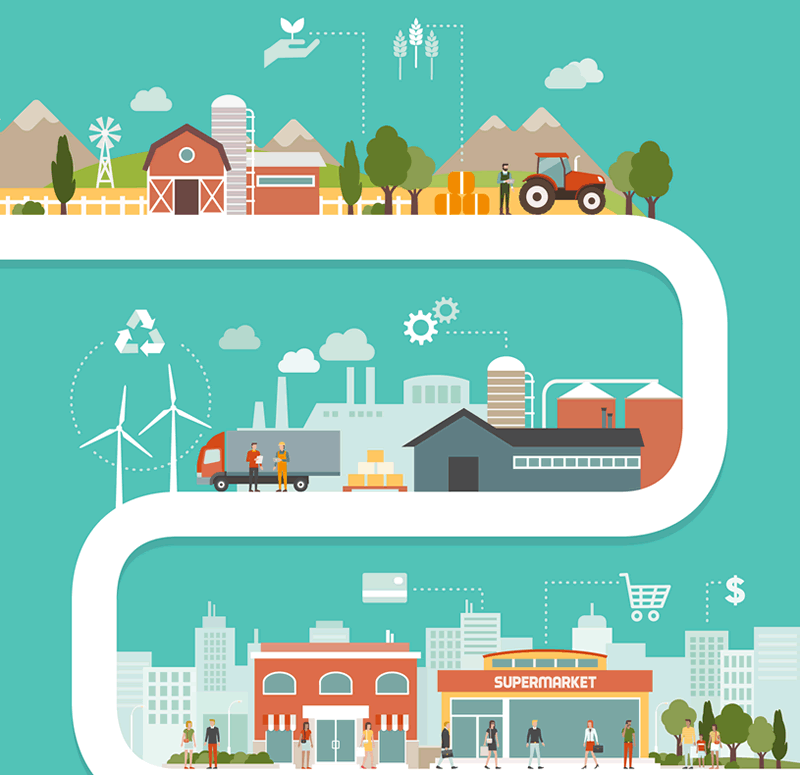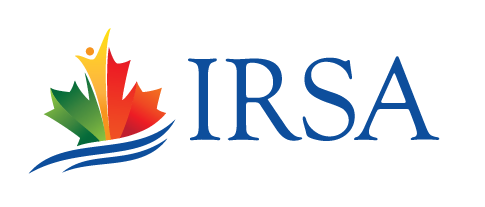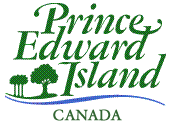Workplace Health and Safety
Health and Safety Training
Your employer and your supervisor must make sure you have the information, training, and equipment you need to work safely and protect yourself from injury or illness. This is the law under the Occupational Health and Safety Act (OHSA) (more information). Any time you start a new job or are given a new task, your employer must notify you of any dangers, and provide basic training in occupational health and safety on the following topics:
- Your duties and rights under OHSA
- The duties of employers and supervisors under OHSA
- Common workplace hazards and occupational illnesses
- The role of joint health and safety committees and health and safety representatives under OHSA
- The role of the Ministry of Labour, the Workers Compensation Board (WCB) of PEI, and any other health and safety associations
- Information and instruction to complete Workplace Hazardous Materials Information System (WHMIS) training.
If you are a supervisor, your training may be different.
Health and Safety Rights
You have important rights under the Occupational Health and Safety Act (OHSA):
- You have the right to know. You have the right to know the dangers in your job. Your employer or supervisor must tell you about anything in your job that can hurt you. Your employer must make sure you get the information you need so that you can work safely.
- You have the right to participate. You have the right to take part in keeping your workplace healthy and safe. Depending on the size of the company, you can be part of the health and safety committee or be a health and safety representative. You also have the right to take part in training and information sessions to help you do your job safely.
- You have the right to refuse unsafe work. If you believe your job puts you in danger, you must report the unsafe situation to management. If the situation is not corrected and you feel that your health and safety is still in danger, you have the right refuse to perform the work. The law states that you cannot be punished for refusing unsafe work.
If you believe your job puts you in danger, you must report the unsafe situation to your supervisor. If the situation is not corrected and you feel that your health and safety is still in danger, you have the right refuse to perform the work.
If you report a hazard to your employer and they do not fix it, you can call the Workers Compensation Board toll-free. You also have a duty to keep your workplace safe for yourself and your co-workers.
Your Responsibilities
- Report any workplace hazards (dangers) to your supervisor.
- Wear or use any protective equipment that is required for the job.
- Follow the law and the health and safety policies and procedures of your workplace.
- Work and act in a way that won’t hurt yourself or any other worker.
Unsafe Work
You have the right to refuse work that you believe is unsafe to yourself or another worker under the Occupational Health and Safety Act (OHSA). And, you have the right to refuse work that puts you in danger of violence from someone in the workplace.
If you refuse unsafe work, you must follow these steps:
- Tell your supervisor or employer right away that you are refusing work and explain why.
- If you need to, explain that you are exercising your rights under the Occupational Health and Safety Act.
You can learn more about the procedure for saying "no" to unsafe work in Guide to the Occupational Health and Safety Act. More information
Your employer is not allowed to fire you, send you back to your home country, or treat you badly if you refuse to do work that you believe is unsafe. If you do not feel comfortable to say no to your employer, or if you are worried that you could lose your job, contact Workers Compensation Board, or contact the Cooper Institute.
Injury and Illness in the Workplace
What to do if I am injured at work?
- Get First Aid or Medical Attention. Tell the doctor or nurse that you were hurt at work, or on your employer’s property. Ask them to submit a report to the Workers’ Compensation Board of PEI (WCB). Some work sites have a designated First Aid Attendant, who can address minor injuries or help to stabilize your condition until you are seen by a medical professional. If your injury is an emergency, call 9-1-1.
- Report the injury to your employer. Report the injury to your employer as soon as you can, if you feel safe doing so. Explain who was involved, how and where the injury happened. Provide as much detail as you can. If you have a safety committee or representative, make sure they know about your injury.
- Complete the Worker’s Report – Form 6. Whether or not you miss time at work, you must complete this form. Send it by mail, fax, or drop it off in person. Please do not leave the report with your employer. You must make sure that WCB PEI receives the form.
Your employer is not allowed to fire you because you have been injured or because you have contacted the Workers Compensation Board (WCB) or PEI or made a claim for injury compensation with this organization. If you believe that you have been treated unfairly after a workplace injury, contact PEI Association for Newcomers to Canada or Community Legal Information.
Workers’ Compensation Board (WCB) of PEI - Compensation
You may be eligible for financial compensation for wages that are lost due to injury at work. Such claims for compensation are made through the WCB of PEI. WCB coverage is paid for by your employer.
WCB - What is covered and what is not:
- Injuries that take place during work hours, on the worksite.
- Injuries that take place during non-work hours on the worksite may be covered.
- Accidents that were your fault can also be used to file a claim, and may be covered.
- You may be covered if you were injured during transportation to and from the worksite.
- You are not covered for non-work activities that take place outside your employers’ property.
For help with filing your claim, or to learn more about making a claim, call Workers Compensation Board (WCB) toll-free or visit their website (more information). You can ask to speak with someone in your language.
If you don’t agree with the decision of your WCB claim, you can make an appeal. If you have problems filing your claim or need to appeal, contact the Office of the Worker Advisor. More information
Eye Health
As a farm worker, you may be at risk of irritation or injury to your eyes through exposure to dirt, soil, dust, and pest control products. The sun’s ultraviolet (UV) rays can also hurt your eyes.
To protect yourself:
- Wear safety glasses that have 100% UVA & B protection. Your eyewear should fit well and be designed for the specific duty or hazard you are exposed to. Be sure to wear your safety glasses regularly.
- Be careful of flying debris when you or your colleagues are using power tools. When working around trees or plants, be careful of branches that can scratch or poke your eyes.
- Wear a good hat. Try to get a hat that has a strong brim, long peak and side panels. This type of hat protects against the sun and any objects that may come too close to your eyes.
- To manage or reduce eye irritation, wash your face and rinse your eyes with clean water at the end of each work day. Some people find it helps to put a compress (clean cloth) with warm water on their eyes. Some find that eye drops can also help.
If you get an eye injury, get medical help right away and tell your supervisor. Go to a hospital, an ophthalmologist (specialist in eye problems), or a doctor. If it is an emergency, call 9-1-1.
Heat Exhaustion and Heat Stroke
As a farmworker, you often do physical work in the sun and in hot temperatures. This can be dangerous – the sun can cause skin damage and the heat can cause dehydration, heat related illnesses.
To protect yourself from the sun and heat:
- Drink water often, even when you don’t feel thirsty. You lose a lot of water through sweat in the heat and it is important you keep hydrated.
- Wear white or light-coloured, light-weight clothing to deflect some of the sun’s heat.
- Wear clothing that blocks the sun, such as hats, pants, and long-sleeved shirts to reduce your skin’s exposure.
- Use sunscreen.
- Wear sunglasses or safety glasses with UV protection.
- Take breaks in the shade.
- Ask your employer if they would consider organizing work shifts to avoid times when the sun is strongest.
Two of the most common heat illnesses are heat exhaustion or heat stroke. Both illnesses are serious but heat stroke can be life threatening. Heat exhaustion precedes heat stroke, and, therefore, identifying early symptoms of heat exhaustion is important.
Signs of heat exhaustion:
- Dizziness
- Headaches
- Sweating
- Vomiting
- Cramps
- Fast heartbeat
Signs of heat stroke:
- Hot, red, dry skin
- High body temperature
- Fainting
- Convulsions (shaking and muscle spasms)
- Confusion
If you notice early signs of heat exhaustion, take a break in the shade, drink water, and let your supervisor know. If you do not address heat exhaustion it can develop to heat stroke, which is life threatening, and must be treated as an emergency.
What to do if someone has heat stroke
- Call 9-1-1. While you are waiting for the ambulance, try to cool the person’s body. Spray cool water on them – under the arms, behind the neck, and between the legs are places that can help cool someone down quickly.
- Ensure you know the name and address of your work place, so you can tell the ambulance where to go.
Learn more on the dangers of heat from the Ministry of Labour’s heat stress information sheet.
How can I protect myself from pesticides?
Some farms use pest control products that could pose a risk if they are not used correctly. These pest control products are usually referred to as pesticides, and they are used to control and/or prevent loss of agricultural products due to diseases, insects, weeds, and other pests. Pesticides can be applied as gases, sprays, powders, or liquids.
All pest control products have the directions for use detailed on the label. The label of a pest control product is a legal document that must be followed under the federal Pest Control Products Act. Following the label ensures proper use of pest control products, reducing human and environmental health risks.
The period of time between pesticide application and the time at which it is safe for you to return to the area that was treated is called the re-entry interval. Do not enter an area treated with a pest control product before the re-entry interval has passed. If in doubt, ask your supervisor if the re-entry interval has passed before entering a field or an area that has received a pest control product. The re-entry interval varies depending on the product itself, and is outlined on the label.
Depending on the specific product, improper contact with a pesticide can lead to unpleasant effects such as rashes, muscle pain, chest pain, vomiting, diarrhea, itchy eyes, blurred vision, dizziness, throat pain, slurred speech, or drooling, among other symptoms. Pesticides may also have serious long- term effects.
Under the Occupational Health and Safety Act (OHSA), you have the right to know the risks and to ask questions that can help you.
Keep safe
You should receive specialized training before applying any pest control product. Under the Pesticides Control Act, any person using a commercial or agricultural pest control product must have a pesticide applicator licence or certificate issued by the Department of Communities, Land, and Environment. You must not be asked to apply any pest control product without training.
To protect yourself:
- Ask your supervisor for safety instructions and training.
- Ask what the symbols on the pesticide labels mean.
- If you are applying a pesticide, ask your supervisor what protective equipment you should wear. This information is also detailed in the label of the product. Personal protective equipment includes, but is not limited to:
- Long pants and a long shirt that cover your skin.
- Safety glasses.
- Respirator.
- Gloves – to be worn when touching work clothes that may have pesticide residue on them.
- Pay attention to your surroundings:
- Watch out for signs saying pesticides have been applied to an area.
- Keep away from areas your supervisor has told you to avoid.
- Stay out of areas where pesticides are currently being applied, or where the re-entry interval has not yet passed.
- Tell your supervisor if you feel unsafe to apply the product; you have the right to safety at work.
- Tell your supervisor if you are worried that the wind is moving a pesticide from another area towards you. You have the right to stop work until your concerns are addressed.
- Wash carefully:
- Wash your hands before you eat, drink, chew gum, go to the bathroom, or smoke.
- Wash your work clothes regularly. Pesticide residues can remain on your clothes.
- Wash work clothes separately from your regular clothes.
- Wash your hands thoroughly if you were not wearing gloves and touched the clothes you wore during pesticide application.
Remember that you cannot apply a pesticide if you do not have a certificate or license issued by the Department of Communities, Land, and Environment.
What to do if you are exposed
Tell your supervisor and get medical help right away. Tell the doctor the name of the pesticide so they know how to treat you. If the product is on your skin, rinse the area with clean water. If the product gets into your eyes, rinse your eyes for 15 minutes. You can also contact the IWK Regional Poison Centre toll-free for advice about the specific product you have encountered. You can speak to an interpreter by saying the name of your language in English (for example “Spanish”).
In case of emergency, call 9-1-1.










